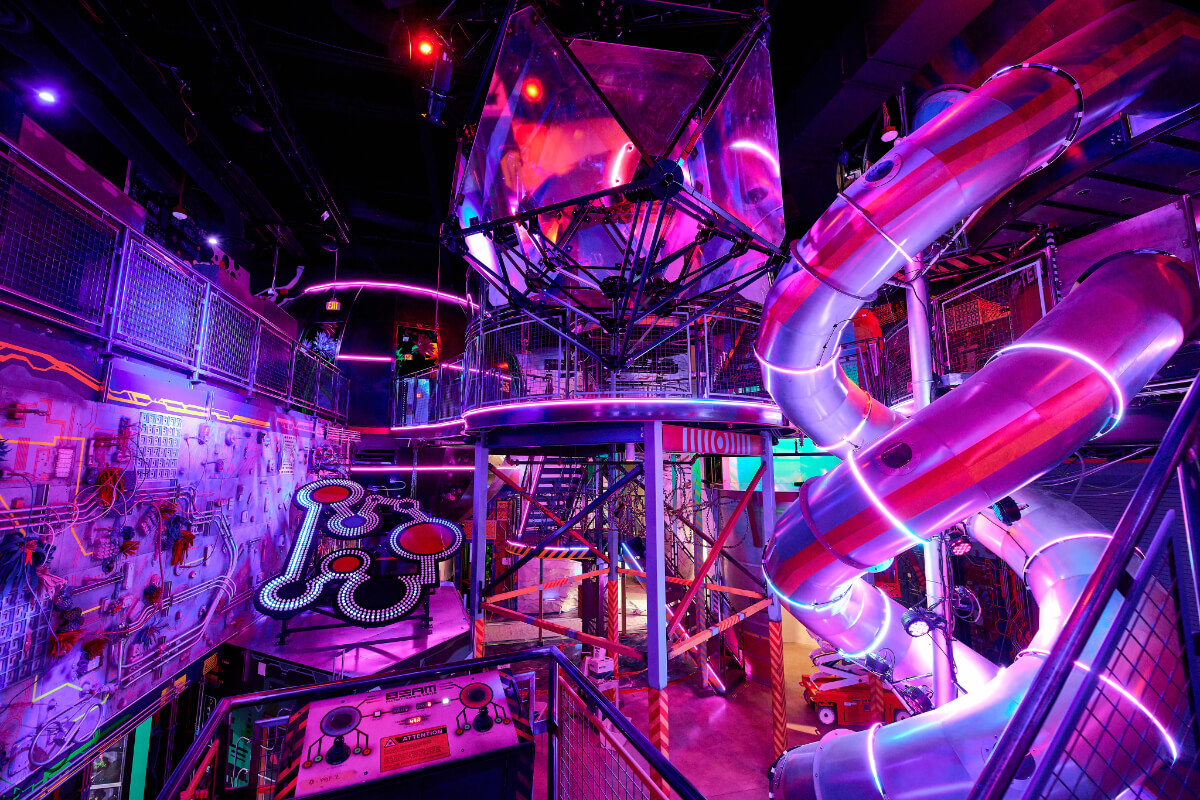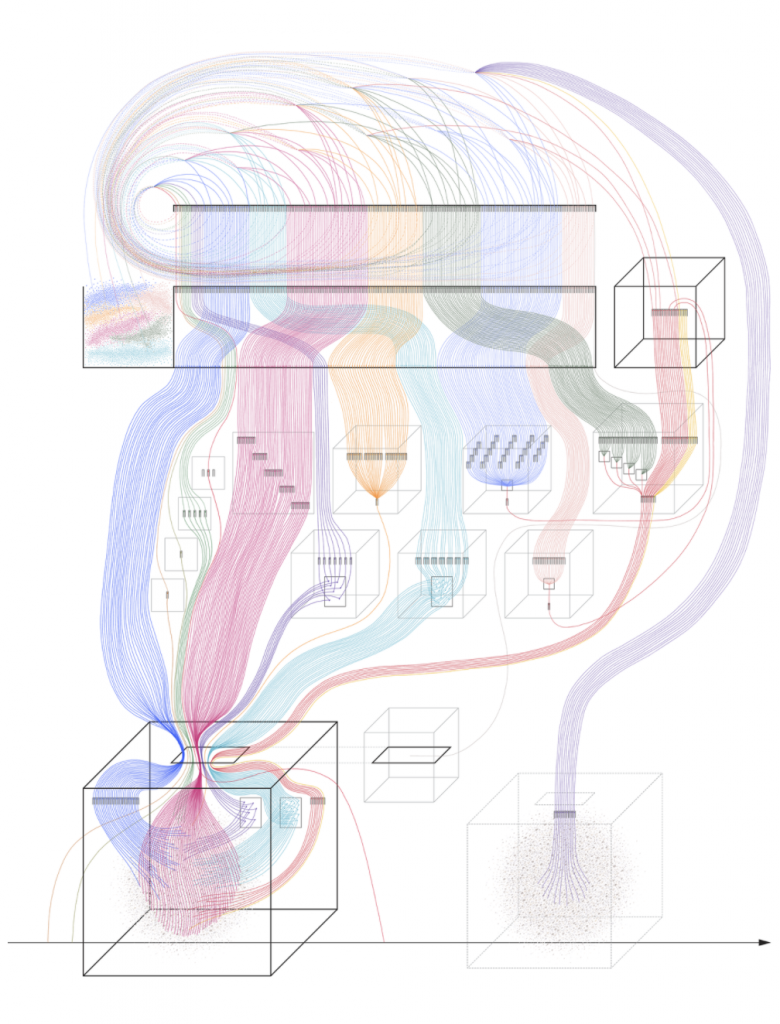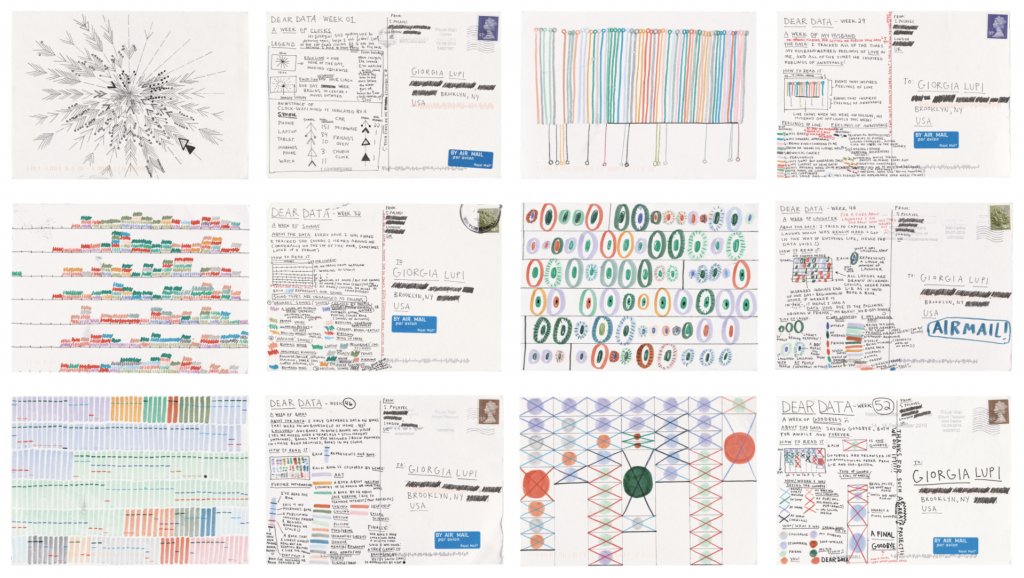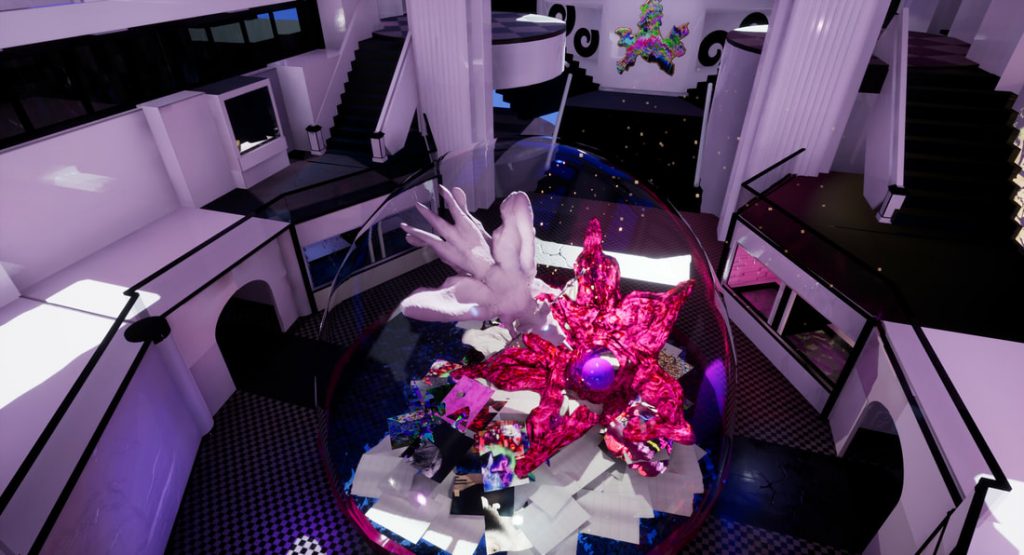Meow Wolf is an art collective that specializes in, and is best known for, creating large-scale immersive art installations, although they also produce streaming content, music videos, and arts and music festivals. They formed in February of 2008 in Santa Fe, New Mexico, and presented their first large-scale installation, House of Eternal Return, in the same year. They have since expanded to several permanent installation exhibits across the nation, including Omega Mart in Las Vegas and Convergence Station in Denver. I was initially drawn towards watching Meow Wolf’s lecture simply because I had heard of them from a friend, but their work is so much more interesting now that I know more about it. It’s incredibly admirable how much attention to detail there is and there has to be. To have such an interactive exhibit that people can go as far as to climb on it, the entire installation has to be incredibly well built and well thought out. This became even more clear through Meow Wolf’s presentation. They had a very casual presentation, but they were also able to show how passionate they were about the art installations. I can tell that they care a lot about what they do, but they know that their work also speaks for itself.
Month: October 2021
LO 8
Meow Wolf is a group of artists in Santa Fe, Las Vegas, and Denver that emphasize on experiences that are magical, surreal, playful, and transformative. Their mediums include installation, video, music production, and extended reality content. Something that I’ve noticed about their work is the vibrancy and color. They use UV lights, neon colors, and colored LEDs to create a dream-like atmosphere. People have described it as multidimensional, “a Salvador dali painting”, and a real-life video game. In the Santa Fe exhibit, you enter through normal rooms in a grand way: from a fridge in a kitchen setting, fireplace in a living room, and washer in a laundry room. After entering, each room in the exhibit has a different atmosphere, from space-like rooms to a magical treehouse.

Looking Outwards 08: The Creative Practice of an Individual
Stefanie Posavec is a freelance designer focused on data-related design and her work includes data visualization. Her personal work often uses a hand-crafted approach to representations of data derived from language, literature, or scientific topics. Posavec is based in London, England and studied graphic and communication design. Posavec describes herself as a designer and artist whose practice focuses on finding experimental approaches for the communication of information.
I admire how her work makes data more accessible and how the way she works is through the idea that observing is creating. I admire this because it’s important that relevant information be shared with as wide an audience as possible and because she’s able to add visual beauty and humanity to objective realities. I admire her art.park.data project because the result’s pictorial format fits its data collectors (children) and setting well (it’s bold yet simple). I also admire her Writing Without Words project because the final form looks like random tree structures but it is actually displaying quantifiable data that helps the audience look at the subject differently and emphasizes hidden complexities.
To present their work effectively, Posavec provides numerous anorak examples, some personal and some historical, some complex and others quite straightforward; after doing this she makes sure to note the connections between these despite the first-glance differences. I can learn to remember to tie things back to a general theme, as she did during her presentation when relating back to her theme of making (make sense, make a connection, make a memory).
LO 08: The Creative Practice of an Individual
Stefanie Posavec is a designer, artist, and author who creatively communicates data to all audiences. Her work is fun, modern, and has a heavy graphic design influence which shows through her colorful and geometric style. Her designs are not also visual but wearable (“Air Transformed”) or even interactive through dance (“Relationship Dance Steps”). She also enjoys book design when the opportunity presents itself. Her work has been exhibited at places such as the MoMA, the Storefront for Art and Architecture (New York), the Centre Pompidou (Paris), ArtScience Museum (Singapore), and more. One work I particularly enjoy is “Data Murmurations: Points in Flight (People Like You),” which illustrates how the various stakeholders in a biobank perceive the people who consent to their biological samples and data being used for research, specifically at Imperial College. The work itself looks almost childlike with the sketchy line quality, and it’s even more enjoyable when you scroll down and see the sketches of all the ways she imagined the data visualization. Describing her creativity as childlike may sound insulting, but i enjoy the uninhibited and beautiful visual of serious data. Her “Dear Data” and “Drawing the Dictionary” projects looks quite similar, and are actually all physical work, adding to the feeling of a lovely drawing handed to you by your child. Not all her work is in this style, but I find it very charming.
http://www.stefanieposavec.com/mywork



LO-08
Alexander porter
I decided to learn more about Alexander Porter. Alexander is an experimental photographer. He combines an appreciation for photographic traditions with emerging computational photography and scanning methods. His work has taken him from Greece investigating the minute surfaces of artifacts, to South Korea investigating the role of video games in the lives of one of the most wired societies on earth. Alexander and James George have created DepthKit, an accessible volumetric cinema system enabling new medium for cinematic expression for the next generation of storytellers. Together they have facilitated access to this technique by teaching workshops internationally, designing open source tools for public engagement, and creating experimental films and installations. I admire how well spoken these people were in this panel. There was a lot of confidence, which made me enjoy the panel more. I thought it was interesting because they talked about virtual reality which i find very interesting.
LO-08: The Creative Practice of an Individual
For this Week’s LO, I am talking about Game Designer and Artist, Christina “Phazero” Curlee. She initially was a Fine Artist – doing installation and painting work before getting into Video Games and Video Game Design.
The reasons for her getting into Video Games involved the openness of expression, ability to connect with others, and the lack of need for funding (like that of art installations). She describes herself as a Video Artist as well.

As for her work, she incorporates psychology, social justice, and self-exploration. This can be seen with her game Artifacts II that deals with the mind, trauma, and memories. I really admire how she incorporates very serious themes and topics into her work. Things that are considered to be very private and personal. But she does it to help others – which is very admirable. I also love her style which is very nonconformist when compared to Video Games in the mainstream.
Finally, I admire how everything she does is self-taught. Something like that is inspirational to me because I want to self-teach myself a lot of things – like coding and video game design. As for presentation, she is open about herself and what she created. She also focuses on how others interact with her work.
I can definitely learn more regarding both from her.
Here are the links to the EYEO Lecture, her website, her game Artifacts 2, and her about me. [Note that her website is not https protected, so be cautious of that]
LO 8: The Creative Practice of an Individual
Sasha Costanza-Chock’s work focuses on amplifying social movements and transformative justice through design. They are currently based in Boston. After studying at Harvard University, the University of Pennsylvania, and University of Southern California, they taught Civic Media at the Massachusetts Institute of Technology, and continued on to the Berkman-Klein Center for Internet & Society at Harvard University. They describe themselves as “a researcher and designer who works to support community-led processes that build shared power, dismantle the matrix of domination, and advance ecological survival.” I admire their interrogation of white supremacy and colonialism specifically in the context of visualization. I also think it’s important to note that they put their work in conversation with the communities it serves as well as people who have undertaken similar projects. They focus their attention toward on-the-ground organizers who can genuinely create the change rather than some academics who prefer to keep their distance. Their transmedia organizing design is meant to be “cross-platform, participatory, and linked to action.”
LO8
Link of the speaker’s website:https://onyxashanti.bandcamp.com/
Link of the lecture video: https://vimeo.com/channels/eyeo2019/355843363
Onyx Ashanti is a musician, performer, programmer, and inventor of the Sonocyb, a continually evolving, malleable interface of prosthetic synthesizer controllers that Onyx 3D prints at home and uses to articulate electronic sound in conjunction with bodily motion. He discussed his perception of the essence of music, his art and their relationship with technology and human beings. As an electronic music major, his work is intriguing to me as sound and studio effects he created were all automated in a random but nice way. In his video, he talks about how he link values generated from multiple aspects of the body to automate sounds, for example, automating delay through different body movements. He is not only artistic: there’s also science and technology involved: By keeping the rhythm within the range of 1-16 hz, which is more science related, Ashanti was able to produce music that makes more sense; and by using 3D printing, Ashanti can truly wear the sensors around his body like clothes, allowing him to perform more subtle musical gestures through body gestures. I learned that I probably can try to link my artwork with myself more. since I’ve been a music producer using VSTI only, I can try to record songs instead to get a more authentic instrument feeling.
LO8
For this week’s looking outwards I researched Matt Zumwalt, who was an eyeo speaker in 2019. Zumwalt is an engineer and scholar based in Philadelphia. He describes himself as a “queer Buddhist software creator,” and has studied software engineering and cognitive science. His work pertains largely to presenting information and open-sourced software. He has developed several hackable Ruby libraries to ease presenting data and large-scale informatics in rails. Much of his work also revolves around meditating on the nature of technology. He wrote an article titled “the internet has been stolen from you” where he discusses the non-cooperative nature of modern industry and its opposition to open-sourced innovation and free transfer of information.
LO 8
Eyeo 2019 “Feeling at Home”
Lauren McCarthy
Lauren McCarthy is an artist, the creator of the p5.js library, and an associate professor at UCLA. According to her website her practice “examines social relationships in the midst of surveillance, automation, and algorithmic living”. In her lecture for eyeo she talks about a couple of her projects. These include a service that allows people to request to be followed by her for a day, a suite of smart-home devices called Lauren that she personally monitors and controls, and video of a series of dates in which she paid Mechanical Turk workers to watch her and give her live advice. I admire how her projects tend to be objectively hilarious, but also offer really novel ways of considering our relationship to technology. I also appreciate how within her talk she discusses a number of her works, but also ties them together as part of a larger narrative about her practice. She successfully avoids the artist talk becoming just a list of projects, but still gives us a good overview of her work.
![[OLD SEMESTER] 15-104 • Introduction to Computing for Creative Practice](../../../../wp-content/uploads/2023/09/stop-banner.png)